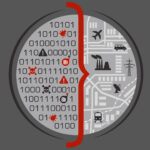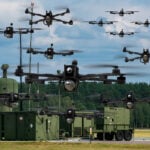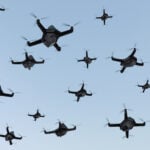Potential Use of Autonomous Lethal Drone in Libya

A United Nations report on Libya claims that a lethal autonomous weapons system was used.
The report states:
“Logistics convoys and retreating HAF were subsequently hunted down and
remotely engaged by the unmanned combat aerial vehicles or the lethal autonomous
weapons systems such as the STM Kargu-2 (see annex 30) and other loitering munitions.
The lethal autonomous weapons systems were programmed to attack targets without
requiring data connectivity between the operator and the munition: in effect, a true “fire,
forget and find” capability.” (page 17)
It further claims:
“Once in retreat, they were subject to continual harassment from the unmanned combat aerial vehicles and lethal autonomous weapons systems…
The report claims that a Kargu-2 drone was used in the attack.
Should this report be accurate, it would mark the first publicly-known instance of an AI-equipped weapons system autonomously identifying and engaging combatants.
However, the true extent of these drones’ autonomy remains ambiguous. The term “autonomy” in this context is not clearly defined and exists on a continuum. While the report doesn’t reveal any more details about the attack, finding out the exact level of autonomy would be interesting.
For 30+ years, I've been committed to protecting people, businesses, and the environment from the physical harm caused by cyber-kinetic threats, blending cybersecurity strategies and resilience and safety measures. Lately, my worries have grown due to the rapid, complex advancements in Artificial Intelligence (AI). Having observed AI's progression for two decades and penned a book on its future, I see it as a unique and escalating threat, especially when applied to military systems, disinformation, or integrated into critical infrastructure like 5G networks or smart grids. More about me, and about Defence.AI.











































